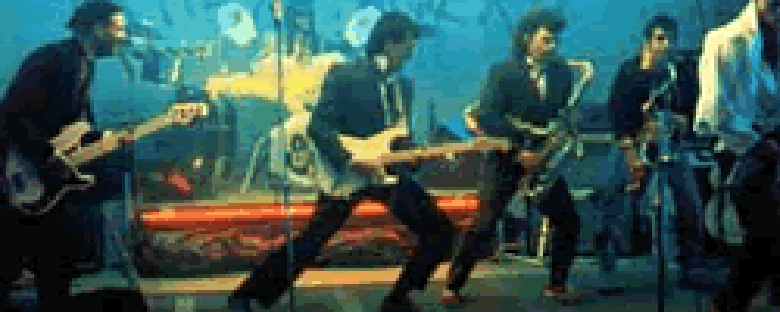Reviews
In a kinetic, superbly directed opening sequence Buckaroo Banzai braces the helm of his jet car — a very souped-up Ford — and like in every imaginative science fiction vessel throws countless switches, waits for an appropriate series of beeps, and adjusts a device described in pseudo-scientific jargon (here, the Oscillation Overthruster). At this point, with a boost increasing in volume and empty horizon ahead, it is clear what is going to happen. Buckaroo then dons a banzai headband and is thrust into the Eighth Dimension. The magnitude of this success, Buckaroo’s life-long endeavor, overwhelms any necessity to explain, exactly, the scientific benefit of reaching the Eighth Dimension.
There is an inherent ridiculousness to The Adventures of Buckaroo Banzai Across the 8th Dimension. It is a film that acknowledges the risk of explaining its science, favoring the ceaseless allowance of its cartoonish fiction. To illustrate, the conflict involves incarcerated Lectroids (aliens) from the Eighth Dimension, an appropriately overdone mad scientist, the President of the United States, a mysterious watermelon, and a choreographed dance sequence. The resulting sum of Buckaroo Banzai is somehow far more original than what its contrivances would suggest in isolation.
The characters each look like they are from a first generation music video, speak like they are in a work of serious science-fiction, and sound like a stepchild to Huey Lewis and the News — the latter comment is entirely in regard to the Hong Kong Cavaliers, “the world’s most elite musical fighting group.” Leading them is Buckaroo Banzai, former neurosurgeon with over a dozen honorary degrees from various universities. In collaboration with the Banzai Institute, he develops an Oscillation Overthruster (an obvious cousin to the Flux Capacitor). The invention enables one, firstly, to travel through solid material, and secondly, to travel to the Eighth Dimension. Because a nemesis exists that shares Buckaroo’s ambition, albeit for, of course, a more controversial end, the Oscillation Overthruster is the objective source of conflict. This mix is in result so deliberately eccentric that the film fails to concretely secure a single, durable theme. Perhaps this is the point, as it has justly secured the film permanent cult appeal.
In the film’s first third, after the thrilling opening sequence, Buckaroo and the Cavaliers, immediately following discussion of a previous experiment, grab their instruments, extend their collars and perform to a very responsive crowd. (Science fiction this is only by the most lenient nomination.) The central conflict of Buckaroo Banzai is distantly seen among these scenes of interruption. All this action is somehow in regard to the admirable pursuit of knowledge.
Earl Mac Rauch penned Buckaroo Banzai following years of development. He claimed to have hundreds of pages on the former neurosurgeon tracing a number of adventures — none of which embraced even the most logical science fiction (an early adventure supposedly involved a King Kong sized robot and a box of Hitler’s cigars). Buckaroo Banzai is no less commendable, despite its dissimilarity, than Roach’s more notable New York, New York.
Buckaroo’s director W. D. Richter scripted a sequel (Buckaroo Banzai Against the World Crime League), presumably shelved due to the film’s financial loss. The script was reshaped into John Carpenter’s Big Trouble in Little China. Little China has the requisite oddness in comparison, and suffered the same popular failure. (And both, incidentally, are available on superb DVD editions.) There is a noteworthy similarity between the films: both involve non-traditional heroes; both violate the genres they seemingly honor. The strength of each film is the dialogue, written with abundant humor and wit. They are products of those familiar with genre expectations, and toy with satire, action, formula romance, and employ a violent disregard for convention.
Science-fiction risks the natural impediment of being goofy (a comment evidenced by Captain Kirk’s battle with Tribbles) and Buckaroo, at the very least, is an example of the genre’s polar extent. The film is stifled beneath a heap of styles and influences, and emerges as a completely original work. The Adventures of Buckaroo Banzai Across the Eighth Dimension (to mind, the second-longest title in film) is desperately original, and its illogic is forgiven.
We don’t do comments anymore, but you may contact us here or find us on Twitter or Facebook.



